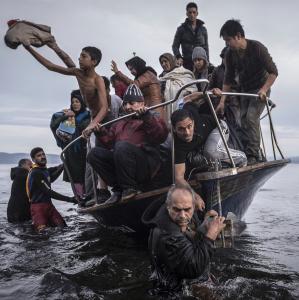 The global human population is now over 7.5 billion, and increasing by about 90 million each year. This means that we are predicted to exceed 9 billion people by 2050, with no peak in site this century and a world population of up to 12 billion by 2100. These staggering numbers are the result of being within the exponential phase of population growth since last century, such that some 14% of all human beings that have ever lived on the planet are still alive today. That is taking into account about the past 200,000 years, or 10,000 generations.
The global human population is now over 7.5 billion, and increasing by about 90 million each year. This means that we are predicted to exceed 9 billion people by 2050, with no peak in site this century and a world population of up to 12 billion by 2100. These staggering numbers are the result of being within the exponential phase of population growth since last century, such that some 14% of all human beings that have ever lived on the planet are still alive today. That is taking into account about the past 200,000 years, or 10,000 generations.
Of course just like the Earth’s resources, human beings are not distributed equally around the globe, nor are the population trends consistent among regions or nations. In fact, developing nations are contributing to the bulk of the global annual increase (around 89 million per year), whereas developed nations are contributing a growth of only about 1 million each year. Another demonstration of the disparity in human population distributon is that about half of all human beings live in just seven countries (China, India, USA, Indonesia, Brazil, Pakistan, Nigeria, and Bangladesh), representing just one quarter of the world’s total land area.
Our planet’s resources are not infinite, so as human population density increases, so too do competitive interactions that lead to greater aggression, displacement, inequality, and exploitation. Perhaps the most sinister of these is the mounting evidence that when populations are large and growing fast, they can be the sparks for both internal and international conflicts that lead to war. The multiple, interacting causes of civil war in particular are varied, including poverty, inequality, weak institutions, political grievance, ethnic divisions, and environmental stressors such as drought, deforestation, and land degradation. But population growth can even increase the probability of military involvement in conflicts. The most recent investigation shows that countries with higher population growth rates experienced more social conflict since the Second World War. In that study, an approximate doubling of a country’s population caused about 4 additional years of full-blown civil war or low-intensity conflict in the 1980s relative to the 1940-50s, even after controlling for a country’s wealth, independence, and age structure
There are two areas where population issues are near the top of the political agenda in many Western nations. One is migration in general, and more frequently and in particular, refugees. Globally, the number of refugees has been increasing on average at an exponential rate of nearly 6% per year since 1950, such that by 2015 there were over 65 million refugees worldwide (this is larger than the entire population of the United Kingdom). This means that on average, 24 people are displaced from their homes every minute of every day (35,000 per day).
While most refugees today came from Africa (around 18 million), the fastest growing region for refugees is the Middle East, and the numbers there have been growing at astonishing speed of 16% annually on average since the early 1980s. Refugees from Asia are the next-most abundant, but they are also growing at an annual rate of 7%.
Taking a look at African countries in particular, there is a positive correlation between a country’s rate of population growth and the number of refugees it produces, meaning that for every 1% increase in the population growth rate, there is an average increase of three to five times the number of refugees produced from that country. Given that Africa is predicted to expand its current population between five and seven times by the end of this century, the number of refugees hailing from Africa could by then rise to between 80 and 120 million annually. Just to put that into context, the lower value is the equivalent of the entire current population of Germany.
But of course, this assumes that the conditions producing refugees will remain largely unchanged from today, when in reality the environmental ravages arising from climate change alone on agricultural production, natural disasters such as floods, fires, and cyclones, and the incidence of warfare, probably mean that these predictions are vastly underestimated. If you think the refugee ‘crisis’ is bad now, you ain’t seen nothing yet.
CJA Bradshaw

